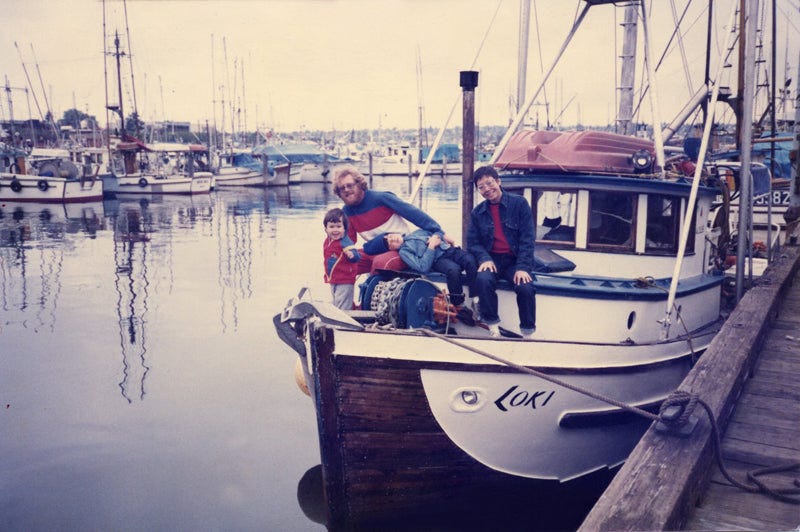Cat Hartwell | August 15, 2024
The Alaskan Salmon Fisheries Edition
On Russia-Ukraine, unions, and Anchorage.
Cat Hartwell lives and works in Seattle, WA.
Cat here. Last fall, I was in Alaska for work and stopped in Juneau for a sightseeing jaunt on my way back to Seattle. During my Uber ride from the airport to the b’n’b, our driver chatted about his day job as a salmon fisherman. The 2023 summer had been a historically bad year for small fisheries—but not because of the fish stock. There was plenty of salmon to fish for, the problem was that the market prices were set so low, most fishers could not make a profit. Everyone was “in the red.” This anecdote echoed what I’d heard just days before from a colleague in Anchorage, whose husband spends summers fishing out of Homer.
Why is this interesting?
My Uber driver placed the blame for record low prices on Russia, and the invasion of, and ongoing war in Ukraine. It made a lot of sense as we discussed it, driving through a torrential downpour typical for Juneau’s wet season. Russia was drafting working-aged men to fight in the Ukraine war effort, pulling them out of the workforce, and was seeking to capitalize on their salmon economy while it still existed. In an August 2023 newsletter to the fishers from whom they source their salmon, Trident Seafood in the U.S said: “Last week, Russia harvested pink volume equivalent to our entire Alaska pink annual forecast.”

It’s mind blowing to think that Russian fisheries could capture in one week what one of the biggest seafood companies in the U.S. forecasts for the year, but that is exactly what happened. The flooding of markets from Russian fisheries drove down the prices of salmon globally, causing a pain point for small American and Canadian fisheries across the sea.
Alaska’s all-species harvest last summer was the fourth highest on record for number of fish and seventh highest for total pounds of fish. However, the total dockside value of Alaska’s fish last summer was down $321.8 million from the year before—an almost 50 percent drop, from $720.4 million in 2022 to $398.6 million in 2023. The local angst about these international pricing dynamics spilled onto social media, as fisherfolk described the challenges of having to figure out budgets on the fly, and led to calls for systems change. Fishing is a famously solo or small team endeavor, but my colleague in Anchorage said that last year was the first year that her husband, a third generation Alaskan fisherman, and his peers started to seriously consider joining forces to form something akin to a union to fight back.
As consumers, how do we support small, sustainable fisheries and make sure the families behind them are able to make a living wage? Can we do that without breaking the bank? When I began to dig into this issue last fall, each stone overturned revealed another challenge. Here in Seattle, I am spoiled with the option of supporting a community supported fishery that I love. In the CSF model, similar to community-supported agriculture programs, the fee that I pay upfront helps cover the overhead costs for the fishery. It may not cover everything, but it makes the small loans that they have to take out even smaller. It’s also pretty cool to chat with them at the farmers market or dockside to hear about their latest adventures in Ketchikan or other remote corners of the Gulf of Alaska.
Consulting with fellow WITI contributor Nick Parish, I learned that similar CSF models exist in Oregon too. I know that family and friends on the east coast really dig Wild Alaskan as a purveyor of sustainably-sourced seafood. It’s already so hard to think about where your food comes from and the wider impacts that your purchasing choices make, but these are small ways that individual choices can make an impact.
The commercial fishing season in Alaska typically runs from June through September, so it will still be a couple of months before we know how the 2024 season went. Hopefully this year, or sometime in the not too distant future, the families who work so hard to provide sustainable seafood for our dinner tables will not have to worry that there will not be enough food on theirs. (CH)
—
Thanks for reading,
Noah (NRB) & Colin (CJN) & Cat (CH)
—
Why is this interesting? is a daily email from Noah Brier & Colin Nagy (and friends!) with editing help from Louis Cheslaw about interesting things. If you’ve enjoyed this edition, please consider forwarding it to a friend. If you’re reading it for the first time, consider subscribing.